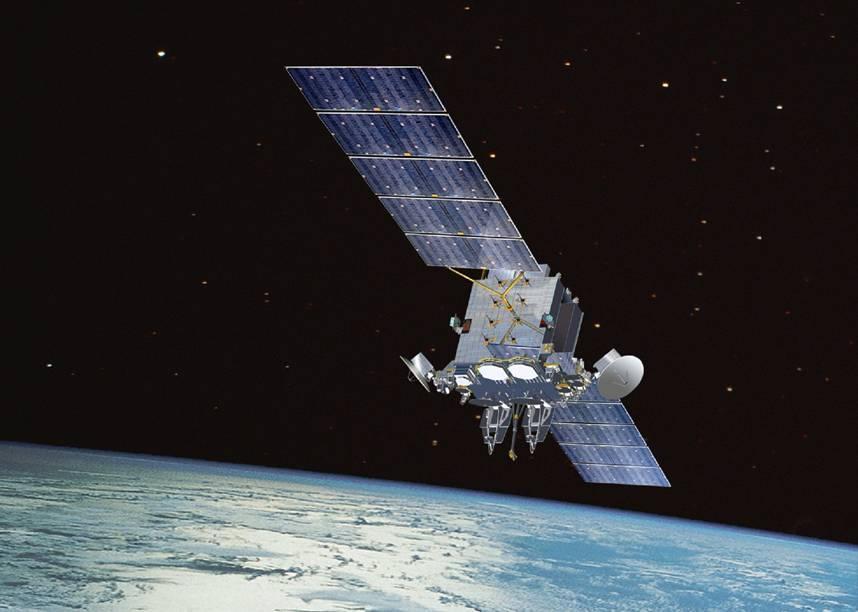Africa-Press – Cape verde. Within three years, the project “Supporting Drought Management in Angola using Integrated Modeling of the Environment, Vulnerability, Decision Making and Technology (EVDT)” will be completed, with a view to improving the country’s preparedness against drought events, through use of satellite data.
Aimed at developing a Decision Support System on drought in Angola, the EVDT is the newest phase of the pilot project to quantify the problem of drought in the south of the country and is in line with the Sustainable Development Goals (SDG: 2 – Zero Hunger and 13 – Action against global climate change).
The Ministry of Telecommunications, Information Technologies and Media, through the National Space Program Management Office (GGPEN) and the Massachusetts Institute of Technology (MIT), through the Space Enable Research Group of the MIT Media Lab, launched, in 2019, the pilot project to quantify the problem of drought in southern Angola.
Data from the National Space Program Management Office indicate that the team of researchers, led by Danielle Wood, used the Integrated Environment, Vulnerability, Decision, Technology (EVDT) analysis model developed by MIT’s Space Enabled Research Group to explore the relationships between environmental, socio-economic trends, political decisions and technologies used to combat drought in southern Angola.
The pilot project demonstrated the feasibility of implementing a geographic information system to exploit satellite data for water management and drought monitoring, having developed the prototype of such a system, dubbed the Angola Drought Data Explorer.
In May, the research team received financial support of US$550,000 from the North American Space Agency (NASA) to fund a new phase of the project that will last three years and should improve the country’s preparedness against drought events, through use of satellite data.
Southern Angola experiences cyclical periods of drought. In 2019, there was the worst drought in the last 40 years, where the rainfall was 65 percent below normal. More than 1,300,000 people were affected in the provinces of Cunene, Huila and Namibe, with financial losses estimated at 168 billion Kwanzas for farmers and livestock breeders, as well as aggravating the social problems for the population in general.
‘Planet Killer’ Asteroid Could One Day Hit Earth
Astronomers have discovered a giant asteroid hidden in the sun’s glare that could one day cross paths with Earth. At 1.5 kilometers wide, it is the largest potentially dangerous asteroid seen in the last eight years and astronomers have called it a “planet killer” because the effects of its impact would be felt on several continents.
The asteroid, named 2022 AP7, managed to evade detection for so long because it orbits in the region between Earth and Venus. To detect space rocks in this area, astronomers have to look towards the sun, and this is notoriously difficult due to the Sun’s luminosity.
For example, flagship telescopes like the James Webb and Hubble never look at the sun, as the star’s glare would destroy their sensitive optics. Because of this, astronomers have only a limited understanding of the nature of asteroids lurking in this region, and sometimes surprises can happen. In 2013, a much smaller asteroid, just 20 meters wide, arrived from the direction of the Sun completely without warning and exploded over the southeastern Russian city of Chelyabinsk, shattering windows in thousands of buildings. Astronomers monitor more than 2,200 potentially dangerous asteroids, space rocks that orbit dangerously close to Earth and are wider than a kilometer. Such asteroids are of the greatest concern as they would cause widespread destruction, potentially affecting the entire planet.
However, even much smaller asteroids would cause a lot of problems if they fell into densely populated areas. For example, an asteroid just 50 meters wide would damage the entire city of London if it exploded above the city centre.
“Only about 25 asteroids with orbits completely within Earth’s orbit have been discovered to date due to the difficulty of observing close to the Sun’s brightness,” said Scott S. Sheppard, an astronomer in the Earth and Planets Laboratory at the Carnegie Institution for Science and lead author of the article “describing the new discovery”.
The discovery of AP7 2022, which would be far more damaging than Chelyabinsk if it hit Earth, was only made possible by the supersensive Dark Energy Camera at the Cerro Tololo Inter-American Observatory in Chile, which scans the sky during twilight, when these asteroids can be detected within two 10-minute periods per day. “So far, we’ve found two large near-Earth asteroids that are about a kilometer in diameter,” said Sheppard.
Because inner solar system asteroids are so difficult to detect, they are underrepresented in models of the global population of solar system space rocks. However, Sheppard believes that only a few unknown “planet killers” are left in this difficult-to-observe region. The good news is that most of these unknown asteroids likely follow orbits that keep them safely away from Earth.
China completes space station
The third and final module of the Chinese space station Tiangong took off yesterday from Wenchang, southern China, having already entered orbit, announced the Xinhua News agency. The launch marked China’s ninth space station-related mission since sending the Tianhe core module into orbit in April last year.
Mengtian is a spacecraft measuring 17.9 meters in length and weighing around 22 tons. The scientific experiment module, whose name means “Dreaming of the Heavens”, met and docked with the orbiting central Tianhe module and Wentian experiment modules just yesterday.
The equipment installed aboard the Mengtian will be used for experiments related to microgravity, fluid physics, materials science, combustion science, fundamental physics and more.
“The docking of the Mengtian module with the space station will mark the completion of the construction of China’s space station and the start of the operational phase,” Wang Qian, deputy chief designer for the overall structure of the Long March 5B rocket, told CCTV. Together, the three modules will complete China’s tiangong space station and realize a vision for a space station approved in 1992.
The T-shaped Tiangong will receive three astronauts for six months at a time, or six crew members for a brief period during crew deliveries.
Space calendar for today
A SpaceX Falcon-Heavy launches, from Kennedy Space Center, Florida, the USSF 44 mission for the United States Space Force. The mission will deploy two payloads into geosynchronous orbit, one of which is the TETRA 1 microsatellite, for military uses.
For More News And Analysis About Cape verde Follow Africa-Press






